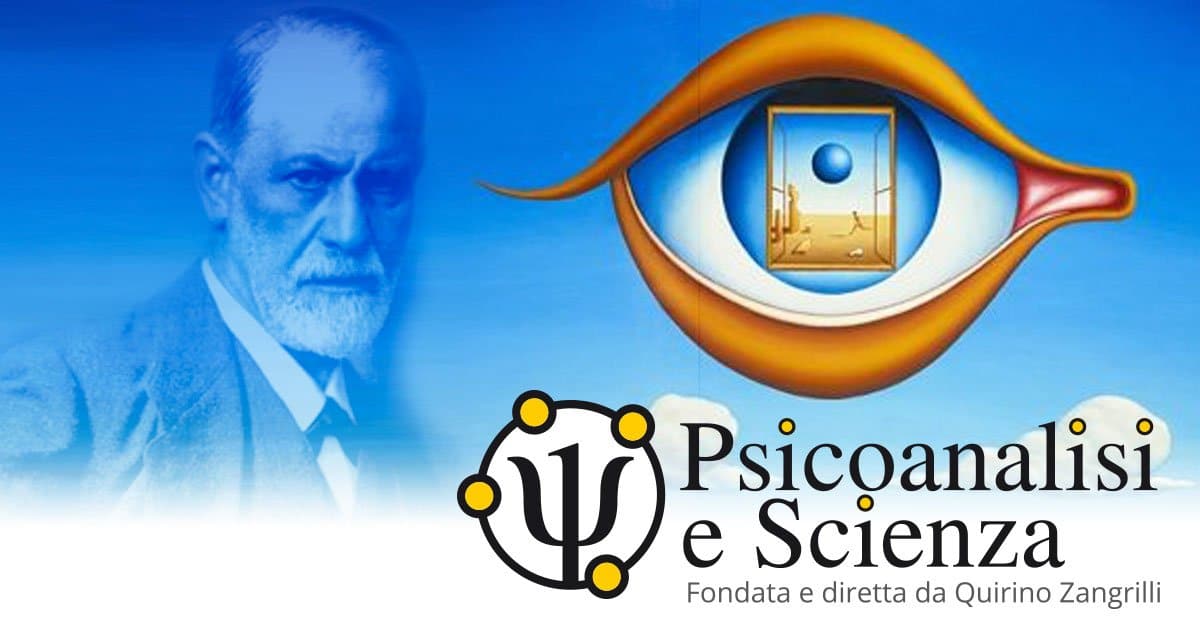The Ball of Fire
“Ball of fire” – “Scorching ball” – “Inflamed ball”: are some of the efficacious descriptions used by numerous patients to indicate a particular somatic-psychic vicissitude, source of intense sufferance, which persecutes them. In order to refer to such a perceptive situation I will utilise the term “Ball of Fire” for the simple reason that this is the description which appears with major frequency.
The Clinical Picture
Here are the recurring phrases used by the patients to describe their experiences:
“This morning I had this great ball inside me again. I don’t know what it is, I can’t identify it. It is like a ball of fire in my stomach”.
– “My God, what a lump in my throat! I always wake up with that flaming ball in my stomach”.
– “It’s as if I have a ball at the mouth of my stomach. It rotates and pricks me. It fires pieces in every direction, it explodes them”.
– “I always have this ball of fire inside me and I’m beginning to think that it’ll never go out”.
These are sentences pronounced by four different people, of both sexes, of different ages, from various geographical regions and from various socio-cultural contexts. And still they all feel the same identical sensations. Is there a characteristic which unites them in their evident diversities? Yes, it is the psychic structure, their psycho-biological background: they are subjects with a syndrome with a clear projective mark which sometimes shows peaks of such intensity that leads to a full-blown paranoiac syndrome.
They are all indifferently persecuted by the “Ball of Fire”. This representational-affective set has certain characteristics: it is irregularly spheric, a factor which underlines the closing of a portion of an alien space (the patients underline its persecutory alienness). It is energetically charged, actually, hyper-charged, so much as to generate the image of a fire which burns and destroys. With different intensities, the subjects feel that the ball of fire conditions their existence, conducts their actions and interferes with their sentiments or conscious resolutions
The Micropsychoanalytic Interpretation
All of them feel that the ball of fire comes from the past, a past with indistinct limits. The ball of fire, even in its alienness, has however a familiarity. For certain aspects we could compare it to a psychic tumour, an agglomerate of cells of the same organism which, developing a biological autarchic economy, attacks the host or, better still, uses it for its devastating attempts for growth and immortality.
This disconcerting ‘thing’, practically, occupies an organism, it is part of it, it manifests an autonomous energy and it influences its destiny.
In all the cases observed the symptomatic manifestation of the ball of fire underwent transitory exacerbations in synchrony with the deepening of the micropsychoanalytic research on the image of a family member with whom the person had had a symbiotic connection, who had died prematurely, a loss which was worsened by the absence of the elaboration of grief or by a pathological elaboration of it.
In a particular case, the ball of fire powerfully occupied the symptomatic fore-stage when the patient had begun to speak about an uncle who had his same name, who had died prematurely after a painful illness and whose place, in the family’s imagination, he had taken as the re-edition of an unfortunate attempt.
Similar manifestations can be frequently observed also in cases of subjects who are born following an abortion. In the pregnant woman’s psychic dynamic that aborted attempt to realise an energetic exigency of the Image, as a trace of a traumatic experience (fixation), relives in the new attempt, often blending with it.
And I will not omit the father from such a dynamic, since the unborn children are the ontogenetic crystallisation of virtual images which are energetically active from the moment of their fecundation and they look for, in this torrent of chance conditioned by the form of the phylogenetic experience, an actualisation and an integration with the aim of constituting a formal constellation which is sufficiently stable to guarantee the connection, therefore the survival, of the elements of the set (see the article by N. Peluffo “Relazioni tra sogno e creatività”, Bollettino n° 9, page 32).
“It seems to be a thing different from me, indeed I belong to the ball of fire, I am its slave, I wait for its orders. It frightens me: and yet that ball of fire is a barrier, a grip. It is a shell, a continuous heat which never extinguishes. It is like having a light and not having anything to light up” (patient affected by a severe depression due to a precocious loss of the primary object, partially defended by a denial mechanism and construction of a paranoiac syndrome with erotomaniac delusion).
In such an intense sentence we can catch various aspects of the theme. The persecutory intonation of the relation to the image of the ball of fire does not exhaust the problem. As well as being one of the modalities of the representation of the persecutory object privileged by the paranoiac subjects, in the qualities attributed to the ball of fire the following principal characteristics of the Image can be seen: an entity which presents certain exigences, of which the ontogenetic involucre is more or less the unaware executor; its function as a protective barrier towards the energetic attraction of the Void and therefore the pressure towards the disorganisation; the impossibility of finding an object upon which to invest-bind the sexual-aggressive drives. These patients burn due to the impossibility of external investment, they are energetic power stations lacking real connections which march inexorably towards overheating (tensional surplus).
“It is like having a penis and not having anything to put it into. And you feel as if you have all the world inside you. Like thinking of burning for an eternity fertilising myself, like dying inside. It is the fire which chases itself. I would like to create something, I want a son and the Ball o Fire serves for this purpose: it is the Ball o Fire that begins”.
This function of phylogenetic imperative to the procreation made by the ball of fire can also be found in the material of a young woman, affected by a severe paranoid syndrome, in which the presence of the phenomenon exacerbates itself every time she has sexual intercourse which reactivates in her the desire-fear of becoming pregnant.
“Every time I have sex it seems like I have fire in my vagina. A ball of fire: that fire which persecutes me. The penetration leaves a mark, the scorching ball is the stasis, it is the act of remaining still”.
The mythological representation of fire is contained in Prometheus’s myth. As we know, Freud interpreted the problem of the rapport between the fire and the act of micturition with the formulation of the hypothesis that “The condition of dominating the fire has been the renunciation of the pleasure (of the homosexual type) of extinguishing it with the jet of urine”. 1 I believe that the true essence of Prometheus’s myth expresses the discovery, by human beings, of the mechanisms of procreation and the relative anguish of loosing this strategic information. In my opinion it certainly concerns the renunciation of the urge, but specifically of the direct and performed homosexual activity within the primitive horde which enormously reduced the possibility of making the species eternal. The humankind, during a very long period of time, thanks to repeated observations, became aware that the urinary function had nothing to do with procreation (erroneous perception which repeats itself in the child’s mind) and that homosexual intercourse was a rapport that did not create new individuals.
Prometheus’s fault is that of having given the fire to the human beings, subtracting it from the Gods, hiding it in a hollow cane (probably a giant fennel-stalk): it is the germinal plasma contained in the spermatic excretory ducts which the Titan reveals to the human beings. Prometheus, benefactor of humanity, in truth, reveals to man the Secret of the conservation of the species. And how can we not notice that Prometheus’s myth has as a corollary that of Pandora? She was the first woman created by Zeus so that she would become the punishment of mankind for Prometheus’ theft of the secret of fire. Therefore, the first woman appears on the earth after the transgression of the fire, in other words, the discovery of the mechanisms for the conservation of the species. It was probably then that the decline of the homosexual behaviour in the primitive horde was decided together with the affirmation, the encouragement and the protection of the heterosexual one. From this point of view the ball of fire is the tormenting result of the exigencies of the Image towards the subjects fixed to a homosexual position, which was more or less recognised and performed.
In effect the redimensioning of the symptom in all four cases studied was obtained, after a period of fertile psychoanalytic work, of their own narcissistic-homosexual fixations and the structuring of the first heterosexual attempts. The dissolving of the nuclei of the narcissistic-homosexual fixation synchronically consents the renunciation of the compulsory and privileged use of the projection as a defence mechanism and allows the exercise of the first valid introjective feed-back (without the identification and the introjection the projection becomes a process of emptying):
“I wanted one of your photos. Something to keep and to look at, something to keep inside me. Staring at an image, to be able to bring it inside me, to be able to have and keep. It was so strange that I hadn’t done it yet! I wanted a photo of you opening the door for me, something that hatches, that opens up”.
I have spoken about the redimensioning of the symptomatology of the ball of fire, not of the resolution.
The latter is possible only by working beyond the unconscious and the ontogenetic, directly at the heart of the processes of the energetic organisation of the human being and of the mechanisms of phylogenetic repetition organised by the Image, which can eventually be probed through genealogical research.
We can hypothesise the existence of a discrepancy between the urge system and the psychobiological mechanisms of the discharge. A discrepancy which can refer to either a drive structure so energetically charged to overpower the Ego, so that it cannot regulate the pressure, or an inefficient regulation mechanism: both situations lead to the impossibility of an adequate energetic discharge, with the progressive accumulation of sexual-aggressive energies constituting a small sun which has no objects to illuminate.
Regarding this aspect I would like to underline how the process that I defined in an other work as “actualisation of the human psychism” 2 covers a decisive importance for the structuring of the somatopsychic ground of each individual, ground intended in its micropsychoanalytic meaning as “the psychobiological relation that an individual maintains naturally with his Id, and through it, with his constitutive Void”. 3
During the initiatory stage the organisation modalities of the co-drives and of their motor connections (the way in which they structured in a myriad of attempts which succeeded each other during the course of generations) of both genealogical branches, attempt a cohesion and an amalgamation.
The activity of projections and identifications, if we want to stay on an iconic level, in other words the attempt of establishing reciprocities of representations and affects (projection) followed by the establishing of an energetic bond which structures a fusion in a dynamic conglomerate (identification) begins in the uterus, tumultuously activated by the foetal seismic sleep.
Now, as in chemistry, bonds exist between elements which are possible and stable, others that are possible and unstable and finally others which are absolutely impossible to maintain. The same reasoning can be made for the process of actualisation which happens during the course of the foetal life.
If the maternal phylum and the paternal one are too distant from the icon specificity point of view, the projective process will be continued for infinity in the search for an improbable affinity with the result of maintaining an “aimless” energetic activity without the possibility of a stable binding.
An energetic sac is determined in which the Principle of the constancy of the Void is not safe: a ball of fire. A similar situation can determine itself also due to a stiffening of the iconic screens of the Image which implicates a blocking of the iconic prism phenomenon, in other terms a phylogenetic fixation.
A fixation is an indelible trace left from a traumatic drive experience in the energetic field of the Id: a mould which represents/presents again one of the facets of the Image. The block can only be maintained as long as the iconic facet (the phylogenetic traumatic experience) remains energetically active. This is possible as long as the experience remains anchored to the primary process and there is, therefore, no possibility of any neutralisation of the energetic charge through binding in the secondary process. The ball of fire is fed by experiences which go beyond the ontogenetic life of the individual and penetrate his genealogical history.
“That ball is an involucre from which something tries desperately to come out of. But it cannot. We don’t have the access code to let it out. It’s a very long chain, a long sufferance” (young patient affected by a compulsive character neurosis with paranoiac aspects).
The problem remains that of accessing this unknown ‘code’, in other words of finding verbal, iconic and documental supports which compete to build a history which anchors, in an irreversible manner, the traumatic event to the secondary process. This is what, for example, a young man who had built his projective syndrome did, in order to defend himself from the phylogenetic trauma of abandoning that had tormented the maternal branch of the family group for several generations and of which the precocious loss of his mother was only the last painful repetition (this case is described in a more complete manner in the article “Transgenerational Transmission of the Image With Particular Reference to the Phylogenetic Determinant of the Paranoia”, From the Psychoanalysis to the Micropsychoanalysis, Borla, Rome, 1990).
When the young man escaped from the authority of the Image which demanded revenge and pushed him to play the role of the Vindicator of the maternal phylum, he was able to defuse the transgenerational repetition and actualising himself managed to acquire a major elasticity of the iconic screens which allowed him to optimise his attempts:
“Things are changing for me, for my parents and even for my grandmother: it’s strange, I see her calmer. Now, I no longer feel guided by a supernatural force, by a mortal weight of fire. That ball has disappeared. If I fly in my dreams I no longer feel the fear of the Void, I am immersed in an energy which continues, which is inside and outside of me, everywhere”.
NOTE:
1 – S. Freud • L’acquisizione del fuoco • 1931• Freud Opere, Boringhieri, Vol. 11.
2 – Q. Zangrilli • Trasmissione transgenerazionale dell’Immagine con particolare riferimento alla determinante filogenetica della paranoia • Dalla psicoanalisi alla micropsicoanalisi, Borla, Roma, 1990.
3 – S. Fanti • Dizionario di psicoanalisi e micropsicoanalisi • Borla, Roma, 1983, def. n° 164.
Nel 2024 riceve il Premio Accademico d’Onore della Accademia Culturale Internazionale Cartagine 2.0.
Doctor Quirino Zangrilli was born in Fiuggi in 1955. Graduated with honours in Medicine and Surgery in 1980, he practices Psychoanalysis, with intensive method, since 1982. He is author of 72 scientific pubblications. He has attended as speaker or president of session to many national and international scientific Conventions. His book “La vita:involucro vuoto” (Life: empty involucre), published by Borla in 1993, has been in use by the Chair of Dynamic Psychology at Turin’s University since 1994. He is the author and founder of the multimedia review “Psicoanalisi e Scienza” (Psychoanalysis and Science), the most read Italian on line review of psychoanalysis. In 2012 he participated as a Speaker at the Scientific Festival of BergamoScienza. In 2013 he illustrated his research on the maternal-fetal interaction in the Special Session of the XI World Congress of Perinatal Medicine in Moscow with his relation “Intrauterine Imprinting”. He is visiting teacher at Moscow Institute of psychoanalysis and training psychoanalist of Swiss Institute of Micropsychoanalysis.
In 2024 he received the Honorary Academic Award of the Carthage 2.0 International Cultural Academy
Le Le Docteur Quirino Zangrilli est né à Fiuggi en 1955. Diplômé avec mention en Médecine et Chirurgie en 1980, il pratique la psychanalyse depuis 1982, en utilisant une technique intensive. Il est l’auteur de 72 livres et publications scientifiques. Il a participé en tant que conférencier ou président de session à de nombreuses conférences scientifiques nationales et internationales. Son livre “La vie : enveloppe vide”, publié par Borla en 1993, est adopté depuis 1994 par la Chaire de Psychologie Dynamique de l’Université de Turin. En 1994, il a reçu le “Prix national Ciociaria de médecine”. Il a conçu et fondé le magazine multimédia “Psicoanalisi e Scienza”, qui est le magazine de psychanalyse en ligne en italien le plus suivi au monde. (Source : Entireweb, Alexa, Google, Virgilio, Arianna., etc.). En 2012, il a participé en tant que conférencier à la colloque scientifique de BergamoScienza. En 2013, il a exposé ses études sur l’interaction materno-fœtale lors de la session spéciale du XIe Congrès mondial de médecine périnatale à Moscou avec le rapport “Intrauterine Imprinting”. Il est chargé d’enseignement au cours de spécialisation de trois ans en psychanalyse, psychothérapie psychanalytique et consultation psychanalytique à l’Université de Moscou. Il est membre didacticien de l’Institut Suisse de Micropsychanalyse et de la Commission pour la Pratique de celui-ci.
En 2024, il reçoit le Prix Académique Honoraire de l’Académie Culturelle Internationale Carthage 2.0.
В 2024 был награжден Почетной академической премией Академии Международной Культуры «Карфаген 2.0».








